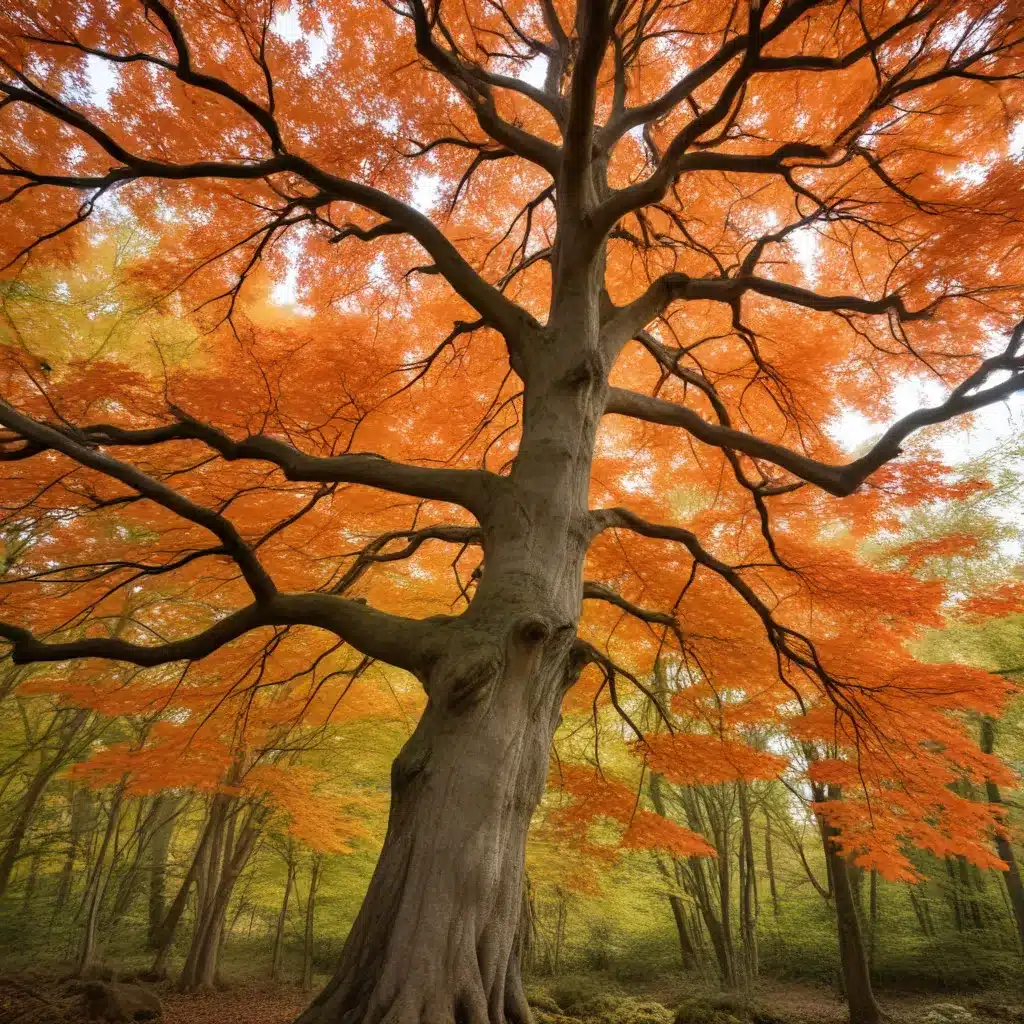
The maple (genus Acer) is a diverse and iconic tree species found across the northern hemisphere. Belonging to the Sapindaceae family, maples are celebrated for their vibrant foliage, versatile uses, and crucial ecological role. As a TriCounty Tree Care specialist, I’m thrilled to delve into the captivating world of this magnificent tree.
The Maple Tree Species
Maples are classified within the Acer genus, which encompasses approximately 128 species distributed across Asia, Europe, and North America. The most well-known and widespread maple species in North America include the red maple (Acer rubrum), sugar maple (Acer saccharum), silver maple (Acer saccharinum), and black maple (Acer nigrum). These species are native to the eastern and central United States and Canada, thriving in diverse habitats from coastal regions to mountainous forests.
The geographical distribution of maples is largely influenced by their adaptability to various climate conditions. Red maples, for instance, have the broadest range, stretching from Canada to Florida and as far west as Texas. Sugar maples, on the other hand, prefer cooler, more northern climates and are prevalent in the northeastern United States and southeastern Canada. This adaptability allows maples to play a vital role in many ecosystems, providing food and shelter for a multitude of wildlife species.
The Maple Tree Anatomy
Maples are characterized by their distinctive palmate leaves, which feature three to five lobes and a serrated margin. The leaf shape and size can vary significantly between species, with sugar maples typically displaying larger, more rounded leaves compared to the slender, pointed leaves of red maples. Autumn brings a stunning transformation, as maple foliage erupts in a vibrant display of reds, oranges, and yellows, captivating onlookers and earning maples their reputation as harbingers of the fall season.
The bark of mature maple trees is also a distinguishing feature, ranging from smooth and gray in young trees to deeply furrowed and exfoliating in older specimens. The bark’s appearance can further differentiate between species, with sugar maples exhibiting a distinctive flaky texture and black maples showcasing a shaggy appearance.
Maples’ root systems are primarily fibrous, with a network of shallow, spreading roots that help stabilize the tree and absorb water and nutrients from the soil. This adaptable root structure allows maples to thrive in a variety of soil types, from well-drained sandy loams to heavier clay soils, making them a popular choice for urban and suburban landscapes.
The Cultural and Historical Significance of Maples
Maples have long held a revered place in the traditions and folklore of Native American cultures. Many tribes, such as the Iroquois and Ojibwe, recognized the maple’s versatility, utilizing the tree for both medicinal and culinary purposes. The sweet sap harvested from sugar maples was boiled down to produce maple syrup and sugar, providing a valuable food source. Additionally, maple wood was prized for its strength and used in the construction of tools, furniture, and even canoes.
The maple’s significance extended beyond its practical applications, as it also held symbolic meaning. In the Iroquois creation story, the first man emerged from the trunk of a maple tree, imbuing the species with a sense of reverence and sacredness. The maple leaf’s distinct shape was also widely adopted as a symbol of strength, resilience, and national pride, most notably as the official emblem of Canada.
European settlers to North America quickly recognized the maple’s potential, particularly in the production of maple syrup and maple sugar. The maple sugar industry flourished in the northeastern United States and southeastern Canada, with small-scale producers and larger commercial operations alike tapping into the trees’ sweet sap. Maple timber also became a valuable resource, prized for its use in furniture, flooring, and other wood products.
Maple Tree Cultivation and Care
When it comes to planting and maintaining maples, careful consideration of their specific needs is crucial for their long-term health and vigor. Maples thrive in well-drained, acidic soils with ample organic matter, making them a suitable choice for many residential and commercial landscapes. The selection of an appropriate planting site is essential, as maples require ample sunlight and sufficient space to accommodate their expansive canopy and root systems.
Proper pruning techniques are essential for maintaining the structural integrity and aesthetic appeal of maple trees. Regular thinning and removal of dead or damaged limbs can help prevent the formation of codominant leaders, which can lead to structural weaknesses and increased susceptibility to storm damage. Maple trees are also susceptible to a variety of pests and diseases, such as aphids, scale insects, and verticillium wilt, which require vigilant monitoring and targeted treatment strategies to ensure the tree’s longevity.
The Ecological Importance of Maples
Maples play a vital role in supporting diverse ecosystems, providing food, shelter, and habitat for a wide range of wildlife species. The trees’ nectar-rich flowers attract a variety of pollinators, including bees, butterflies, and hummingbirds, while their nutrient-rich foliage serves as a food source for herbivores such as deer, moose, and numerous species of caterpillars.
The maple’s ecological significance extends beyond its direct interactions with wildlife. As deciduous trees, maples contribute significantly to the carbon sequestration process, absorbing atmospheric carbon dioxide and storing it within their woody biomass. Additionally, the trees’ extensive root systems help stabilize soils, preventing erosion and promoting healthy watershed function.
Whether you’re admiring the vibrant foliage of a sugar maple, tapping into the sweet sap of a red maple, or simply appreciating the majestic presence of a black maple in your local park, the maple tree’s enduring legacy and multifaceted contributions to our natural world are undeniable. As a TriCounty Tree Care specialist, I encourage you to marvel at the magnificent maple and consider its role in enriching the ecological tapestry of our region.


